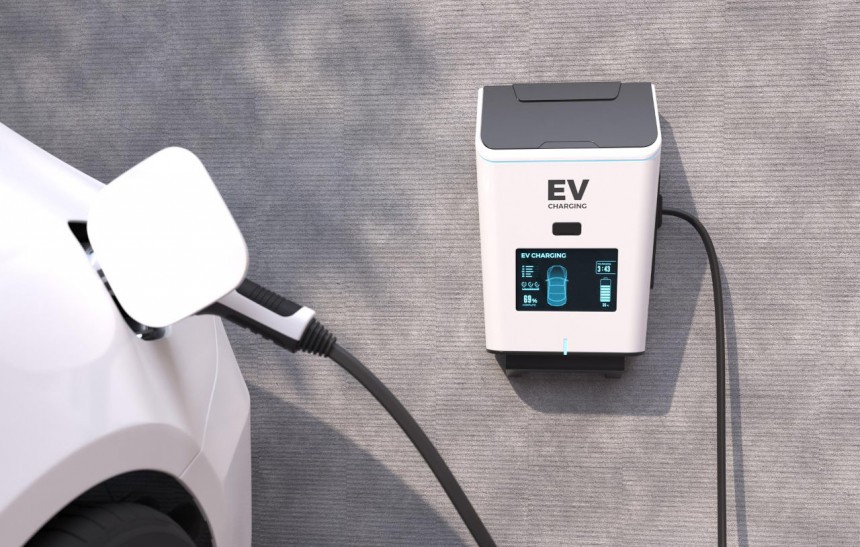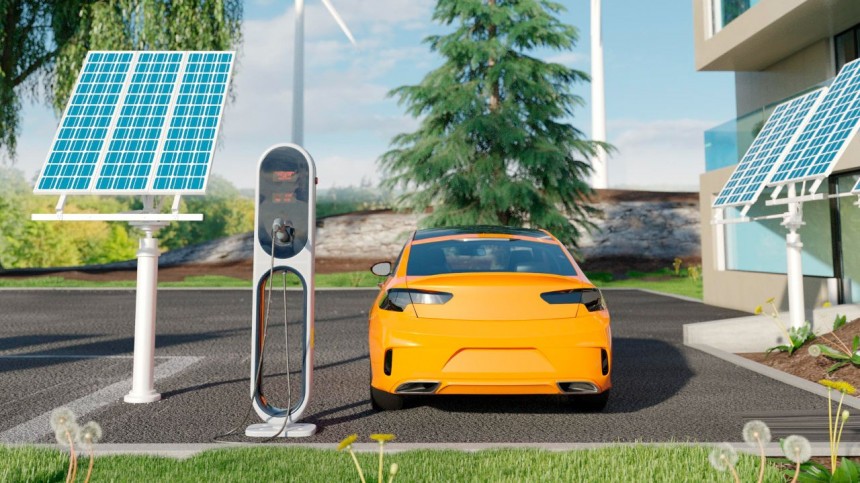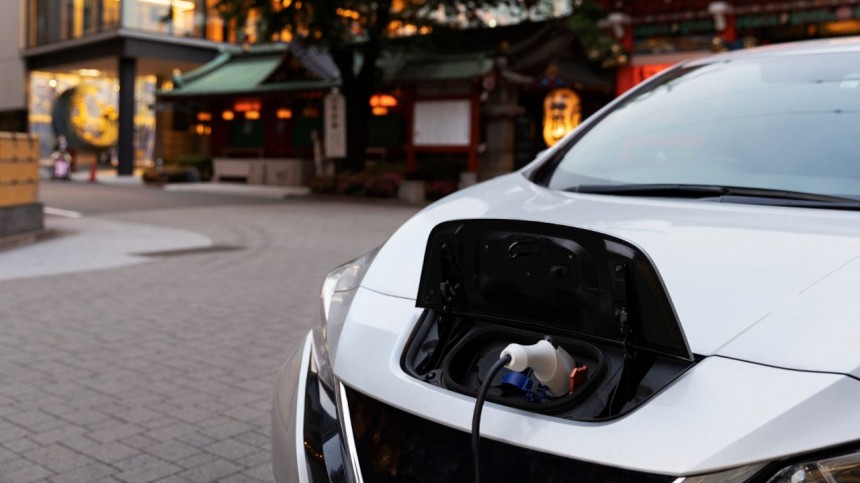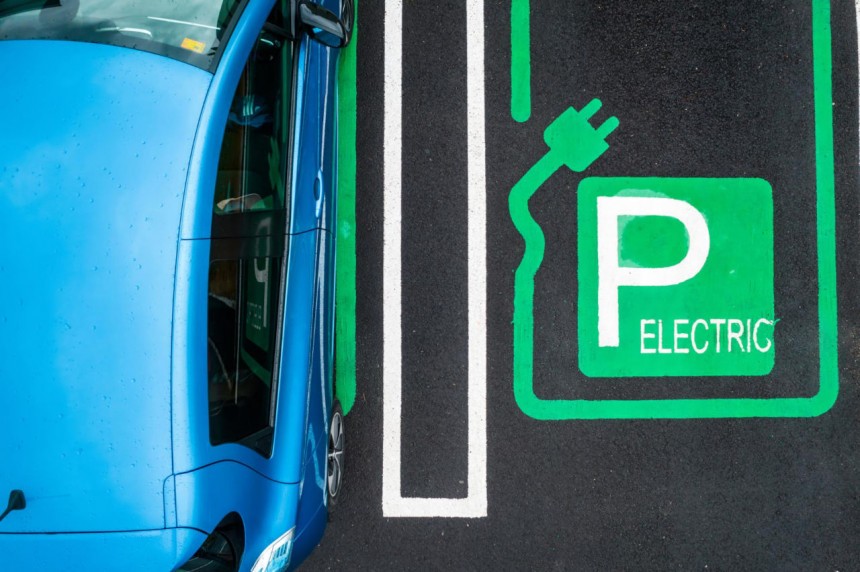A recent MIT study rings the bells of strategic thinking and planning. According to the researchers, efficiently placed charging points and carefully chosen periods for charging the EVs could have a great positive impact. For instance, there wouldn’t be necessary to build additional capacity for producing energy. Which is a big deal in the bigger picture of fast-paced growing energy demand.
The Biden administration’s Bipartisan Infrastructure Law has unlocked $7.5 billion (€7 billion) for putting in place half a million public charging stations by 2030. Analysts argue that the U.S. needs twice as many charging points, or even more. And they should be Level 3 DC fast-charging stations, not Level 2 AC slow-charging ones.
Well, this is one point of view. Another one is coming from MIT researchers, who propose another angle on solving this issue. Between you and me, I think they were secretly funded by Elon Musk to confirm his “secret plan” is valid. Which is charging electric cars with solar power.
I’m joking, the MIT study was funded by Europeans, although the researchers used data collected from two very-American cities, New York and Dallas. The records and surveys sampled the population’s daily use of cars. More precisely, how much time and what period of the day the vehicles spend at different locations.
They also forecast more power plants, because supposedly solar, wind, and energy storage systems won’t be enough to meet peak loads in the evening. Fun fact, guys in the energy sector call this period “the duck curve.” But it’s not funny anymore in the hot summer when people coming from work start millions of air conditioners.
And most of the experts just stick to the idea that solar and wind intermittence can be countered solely by power plants. Which naturally are based mainly on natural gas and coal. MIT is also concerned by the overproduction of solar farms during the day, which can lead to wasted capacity.
So, to summarize, because of the large number of EVs in the following years, MIT researchers fear the electricity grid will require more fossil fuel-based production capacity, and the energy costs will drive up. But this is business-as-usual thinking, and their study is simply the opposite.
The total number of EV chargers in the U.S. is currently ten times more than the Tesla Supercharger network. But they are not necessarily placed efficiently, because they weren’t planned holistically, but separately, according to each company’s partnerships and access to the grid.
What the MIT study suggests is that companies and policymakers follow the real behavior of people rather than trying to convince them to charge where they are not comfortable. A large network of charging points with few charging sessions would be just a big waste of money and resources.
Instead, companies and policymakers should focus on better availability of charging stations at the workplace, for instance. This way, the electricity produced during the day by renewables would require fewer energy storage systems. The EVs’ batteries would be the perfect storage system.
Charging EVs at work during the day means reducing the evening peak load from EV charging. If the EVs will charge mainly at home, in the early evening, this would require around 20% more power-generation capacity. Again, it would be just a big waste of money and resources. And it can be avoided simply by more careful planning of the charging points placing.
Charging station manufacturers are all pointing out that AC slow-charging Level 2 chargers are becoming obsolete. But MIT researchers consider that Level 2 is better than Level 3 for using solar resources during the day. What good is fast charging your EV in less than an hour when it’s parked outside your office for several hours?
This way, the peak energy demand turns into a more manageable curve. It requires a simple app for the EV charger to estimate the right time of starting the battery charging just before it is needed for the next day’s commute. It simply isn’t necessary to full-charge your EV battery every night if during the day you can charge it at work, for instance.
Of course, in real life, things would be more complicated. But at least it’s just a matter of efficiently managing charging times, with no other investments in more grids and more power plants. And this could make a big difference in how public money could be more wisely spent.
Strategically planning the locations of home chargers is a tool for managing demands, based on the 'where they occur and when they occur' principle. Besides, home charging is very important to avoid disrupting people’s travel patterns. Avoiding this inconvenience also helps the rapid adoption of EVs.
In a scenario where charge ports are strategically placed at work and home, the EVs become an effective storage system for solar energy. And this way, electricity prices go down because there’s no need for big upfront investments in new energy storage facilities or power plants.
Combining the two measures could make “a surprising amount of difference”
The team conducted other research, based on drivers’ charging needs on all days. Researchers found that home charging is more effective than workplace charging in strategic planning, but each of them separately is not feasible.
Workplace charging is not a good substitute for home charging, while home charging alone can’t reduce peak electricity demand efficiently. In fact, in a 50% EV ownership scenario, charging EVs solely at home during the night could lead to a 25% increase in peak energy demand.
So, policymakers and companies must consider both measures for incentives and planning. This is challenging because the charging network must be planned differently in every city and district. Nevertheless, it’s worth it, because strategic planning would save a lot of resources.
Analyzes and models from New York and Dallas showed interesting facts. Based on people’s behavior, in an all-cars-are-EVs scenario, the MIT team found that workplace charging would substantially reduce EVs’ contribution to the evening peak: 70% lower in New York and 80% lower in Dallas.
In both cities, combining workplace charging and delayed home charging practically eliminates EVs’ contribution to evening peak. The team also found that this scenario would be valid for more than 90% of drivers in the two cities, without disrupting their day-to-day activities and travel patterns.
But most of all, smart incentives could lead to big savings concerning investments in the grid. Companies from the private sector that are competing for projects could be incentivized with money matching these savings. It’s a win-win scenario for both the companies and authorities.
As for the drivers, the best approach is to incentivize them for workplace charging and delayed home charging. Smaller tariffs or even free charging for certain periods could result in lower electricity prices for everybody. These are complex matters for policymakers and experts to figure out.
For now, the MIT study is more of theoretical proof-of-concept research. But it’s just another proof of how versatile electromobility could become. It’s time to stop developing each charging network on its own and bring everyone to the same table, based on the same efficient planning principles.
It’s kind of odd that the MIT study didn’t mention the vehicle-to-grid technology, which is seen as a game changer mainly by car manufacturers. But researchers were pretty clear: they tried to find a way to solve the problem without complex technology and big investments. We still have to see the V2G put at work seriously, not just marketed as a fancy gimmick.
Well, this is one point of view. Another one is coming from MIT researchers, who propose another angle on solving this issue. Between you and me, I think they were secretly funded by Elon Musk to confirm his “secret plan” is valid. Which is charging electric cars with solar power.
I’m joking, the MIT study was funded by Europeans, although the researchers used data collected from two very-American cities, New York and Dallas. The records and surveys sampled the population’s daily use of cars. More precisely, how much time and what period of the day the vehicles spend at different locations.
The problem with an increasing number of EVs
More ICE vehicles on the road mean more demand for petroleum fuel. More EVs on the road mean more electricity is needed. Many analysts, including government agencies, forecast a sharp increase in energy demand in the next couple of decades, mainly because of electric vehicles.They also forecast more power plants, because supposedly solar, wind, and energy storage systems won’t be enough to meet peak loads in the evening. Fun fact, guys in the energy sector call this period “the duck curve.” But it’s not funny anymore in the hot summer when people coming from work start millions of air conditioners.
So, to summarize, because of the large number of EVs in the following years, MIT researchers fear the electricity grid will require more fossil fuel-based production capacity, and the energy costs will drive up. But this is business-as-usual thinking, and their study is simply the opposite.
How about strategically placing the charging stations?
Tesla’s strategy, in the beginning, was brilliant. They sold you a car and they also gave you access to a network of charging stations. The Supercharger network evolved at a fast pace and today, there are more than 16,000 Tesla chargers in the United States.The total number of EV chargers in the U.S. is currently ten times more than the Tesla Supercharger network. But they are not necessarily placed efficiently, because they weren’t planned holistically, but separately, according to each company’s partnerships and access to the grid.
What the MIT study suggests is that companies and policymakers follow the real behavior of people rather than trying to convince them to charge where they are not comfortable. A large network of charging points with few charging sessions would be just a big waste of money and resources.
Instead, companies and policymakers should focus on better availability of charging stations at the workplace, for instance. This way, the electricity produced during the day by renewables would require fewer energy storage systems. The EVs’ batteries would be the perfect storage system.
Charging station manufacturers are all pointing out that AC slow-charging Level 2 chargers are becoming obsolete. But MIT researchers consider that Level 2 is better than Level 3 for using solar resources during the day. What good is fast charging your EV in less than an hour when it’s parked outside your office for several hours?
And then let’s focus on delayed home charging
This is not a new idea, but MIT researchers bring something new to it. Home charging also means on-street parking locations and areas, not only individual houses or apartment buildings parking lots. The delayed home charging purpose is for people to delay the onset of charging to avoid everyone charging at the same time.This way, the peak energy demand turns into a more manageable curve. It requires a simple app for the EV charger to estimate the right time of starting the battery charging just before it is needed for the next day’s commute. It simply isn’t necessary to full-charge your EV battery every night if during the day you can charge it at work, for instance.
Of course, in real life, things would be more complicated. But at least it’s just a matter of efficiently managing charging times, with no other investments in more grids and more power plants. And this could make a big difference in how public money could be more wisely spent.
In a scenario where charge ports are strategically placed at work and home, the EVs become an effective storage system for solar energy. And this way, electricity prices go down because there’s no need for big upfront investments in new energy storage facilities or power plants.
Combining the two measures could make “a surprising amount of difference”
The team conducted other research, based on drivers’ charging needs on all days. Researchers found that home charging is more effective than workplace charging in strategic planning, but each of them separately is not feasible.
Workplace charging is not a good substitute for home charging, while home charging alone can’t reduce peak electricity demand efficiently. In fact, in a 50% EV ownership scenario, charging EVs solely at home during the night could lead to a 25% increase in peak energy demand.
So, policymakers and companies must consider both measures for incentives and planning. This is challenging because the charging network must be planned differently in every city and district. Nevertheless, it’s worth it, because strategic planning would save a lot of resources.
Analyzes and models from New York and Dallas showed interesting facts. Based on people’s behavior, in an all-cars-are-EVs scenario, the MIT team found that workplace charging would substantially reduce EVs’ contribution to the evening peak: 70% lower in New York and 80% lower in Dallas.
In both cities, combining workplace charging and delayed home charging practically eliminates EVs’ contribution to evening peak. The team also found that this scenario would be valid for more than 90% of drivers in the two cities, without disrupting their day-to-day activities and travel patterns.
But most of all, smart incentives could lead to big savings concerning investments in the grid. Companies from the private sector that are competing for projects could be incentivized with money matching these savings. It’s a win-win scenario for both the companies and authorities.
As for the drivers, the best approach is to incentivize them for workplace charging and delayed home charging. Smaller tariffs or even free charging for certain periods could result in lower electricity prices for everybody. These are complex matters for policymakers and experts to figure out.
It’s kind of odd that the MIT study didn’t mention the vehicle-to-grid technology, which is seen as a game changer mainly by car manufacturers. But researchers were pretty clear: they tried to find a way to solve the problem without complex technology and big investments. We still have to see the V2G put at work seriously, not just marketed as a fancy gimmick.










